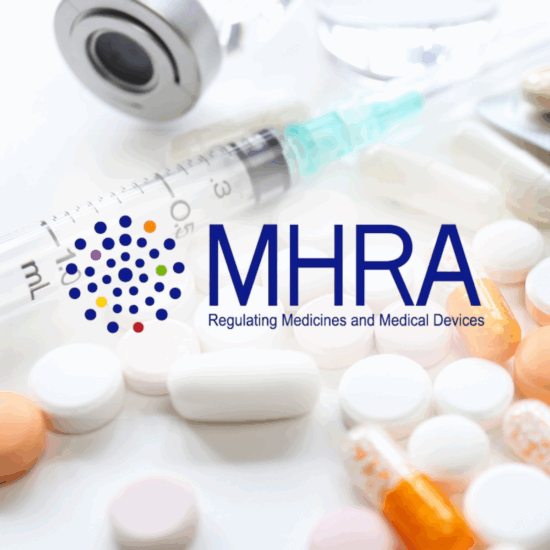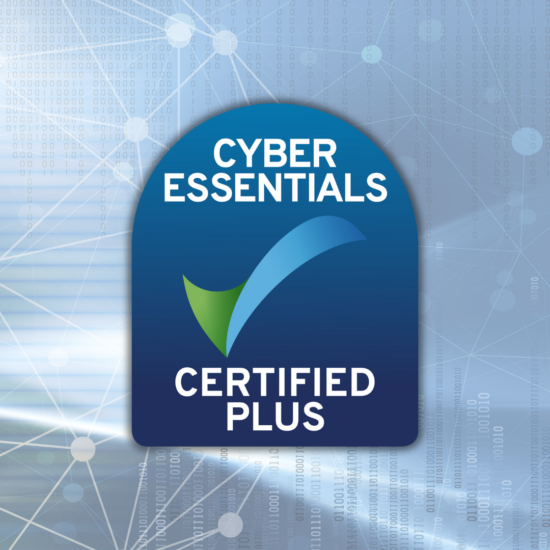New UK Clinical Trials Regulation 2024: What You Need to Know
Published May 29, 2025
Published 02nd February 2024

In the pharmaceutical industry the development of drugs and biological products for rare diseases is often demanding and may be overlooked due to the complexity of the conditions. Considerations such as limited population sizes, and the pathology of the disease may be challenging for researchers and developers. Recognizing the need for a tailored and innovative approach the Food and Drug Administration (FDA) has recently released an updated final guideline in December 2023; “Rare Diseases: Considerations for the Development of Drugs and Biological Products”. This guideline reflects updates from the past February 2019 version; “Rare Diseases: Common Issues in Drug Development”. This blog will help deconstruct the recent guidelines and outline key aspects of the FDA’s approach to rare disease drug development.
A rare disease as defined by the Food, Drug and Cosmetic Act is a disease or condition that “affects less than 200,000 persons in the United States”(pg.2). However, rare diseases may affect even a smaller population. The National Organization of Rare Disease (NORD) reported in 2020 that there are approximately 552 orphan drug designations. While the FDA’s recent estimates on rare diseases within the US reach 7,000 affecting more than 30 million people. The unique challenge that comes with these conditions may be the limited patient population, diverse disease characteristics, and the need for tailored approaches.
Understanding the diseases’ natural history can be beneficial to any drug development program. Rare diseases pathology, however, are often poorly understood. “The need for prospectively designed protocol-driven natural history studies initiated in the earliest drug development planning stages cannot be overemphasized” (pg. 3). While the FDA does not make this a requirement, it is a suggestion to determine if the quality of natural history knowledge is sufficient to inform their drug development programs. An update from the 2019 version includes the natural history section now being fully addressed in a separate guidance “Rare Diseases: Natural History Studies for Drug Development”.
Nonclinical studies are mandated by the FDA as part of the drug development process. The goal of a nonclinical study is to provide evidence that the drug is “reasonably safe to conduct the proposed clinical investigations” (pg. 4). The data collected within these studies can help determine eligibility criteria and important safety information. The FDA have certain factors that are deemed flexible when it comes to nonclinical studies for rare diseases such as pharmacological and chemical characteristics of the drug, the design objectives of the proposed clinical investigations, the severity of the targeted disease, and adequacies of other available therapies (pg. 4). These studies contribute to safety assessments, dosage, and set a bases for further phases of drug development.
Severely Debilitating or Life-threatening (SDLT) rare diseases can be variable, due to the high probability of mortality. For products that are being “developed for SLDT rare disease indications, clinical investigation can often proceed with modifications to the typical nonclinical development programs”(pg. 5). Modifications can be applied in either pre or post marketing submissions. Premarketing or development modifications can include repeat-dose general toxicology studies, species selection and timing of submission. While post marketing modifications can include developmental and reproductive toxicity assessment, and carcinogenicity assessments. The one modification to take note of is the repeat dose general toxicology studies and timing of submission, as described in the guidance document if a “phenotype that is anticipated to progress rapidly to mortality within approximately 1 year, a 1- month general toxicology studies will be adequate to evaluate support for early clinical development” versus the typical 3-month duration (pg.6).
Unfortunately, not all drug development allows for these flexibilities. Due to the concerns of toxicity and formulation pediatric studies require proof of concept data. Furthermore, it is suggested when conducting toxicology studies for pediatric medications, companies should consider using juvenile animals to support data on weight based dosing and adverse developmental effects. However, this is not required. Additionally, to support proof of concept, data from ex vivo or in vitro models such as tissue and cell cultures can be used.
Routine clinical pharmacology assessments are expected to be present in rare diseases. The need for the assessments may depend on certain factors that are known about the drugs disposition, interaction potential, comorbidities, safety profile and the potential organ damage on a drug’s pharmacokinetics (pg. 8). To support these factors different techniques can be leveraged such as biomarkers, controls, and endpoints.
The use of biomarkers in rare diseases may have a critical role in development. Biomarkers evaluate the effects of the drug in relevant tissues. Predictive biomarkers can have a greater potential when used for response to therapy in rare diseases. Additionally, biomarkers can be utilized as endpoints when the situation is appropriate. The guidance for industry and FDA staff “Qualification Process for Drug Development Tools” includes more detailed information surrounding the use of biomarkers.
The use of controls is an essential part of clinical trial design. External controls are developed so participants receiving the test treatment are compared to those who had not received the same treatment. The limitation to the use of external controls is eliminating blinding and systematic differences between treatment groups. Due to these limitations external controls are typically used only for specific circumstances. These may include situations where the “drug effect can be demonstrated in diseases well understood and characterized natural history, high and predictable mortality and in which the drug effect large and self-evident” (pg.11). The suitability for external controls warrants a case-by-case basis as it is not always the preferred method. In most cases a randomized, double-blind controlled clinical investigation is an ideal way to generate data.
Endpoints are another important variable in clinical trial design. “For many rare diseases, well-characterized efficacy endpoints appropriate for the disease are not available.” (pg. 13). Endpoint selection in terms of rare diseases is especially important to differentiate outcomes from different participants as much as possible. Keeping endpoint selection precise helps avoid an overload of information. These endpoints are encouraged to be used throughout the study as rare diseases can rapidly progress and change. Some patients may present with mild progress of disease while others suffer from more severe cases. The variation in disease progression can affect clinical trial design and endpoint interpretation making it challenging.
The FDA further mentions considerations related to clinical development; prevalence of the disease determines the clinical investigation enrollment. Rare diseases may be “genetic in origin and characterized by more than one phenotypic subtype (e.g., infantile, juvenile, adult)” (pg. 17). Estimates based on prevalence should include all subtypes of a disease that are intended to respond to the investigational drug.
Multiple limitations like small population size and prevalence of the disease can affect the accuracy of safety and efficacy characteristics in drug development for rare diseases. FDA recognizes these limitations and acknowledges that standardized operating procedures, quality assurance and quality control are essential. However due to limited approved therapies, “greater uncertainty or greater risk may be acceptable provided that the substantial evidence standard has been met” (pg. 17). Sponsors should discuss their overall plans for maximizing the quantity and quality of safety and efficacy data in early drug development meetings with FDA.
The FDA encourages participation of those who may be directly affected by rare diseases. Firsthand knowledge from patients can be extremely beneficial to include throughout drug development. Understanding the unique needs of individuals with rare diseases is essential for shaping the development, design, and evaluation of potential therapies.
Furthermore, rare disease programs can be multinational. Sponsors should consider the effects of the language barrier, culture, and customs. What is good for one rare disease may not be good for another. Therefore, sponsors must adjust accordingly.
Drugs that are treating rare disease that are serious or life threatening and do not have adequate therapy may qualify for one or more expedited programs. These programs include “fast track designation, breakthrough therapy designation and accelerated approval” (pg. 22). More details on eligibility can be found in the guidance for industry “Expedited Programs for Serious Conditions- Drugs and Biologics (May 2014)” and “Expedited Programs for Regenerative Medicine Therapies for Serious Conditions (Feb 2019).”
It is estimated that half of the people affected by rare diseases are children (pg. 22). Therefore, FDA encourages sponsors to “study the drug in all relevant pediatric populations, birth to younger than 17 years of age, so that the drug can be properly and completely labelled for pediatric use” (pg. 22). Pediatric formulations should be used for accurate dosing, considering even the youngest person affected by the rare disease.
From understanding the unique challenges to navigate the intricacies of clinical development this guidance helps ensure pharmaceutical quality on the pursuit of effective treatments for rare disease. This guidance offers hope to those affected by rare diseases and helps pave a way for more inclusive and effective approaches to drug development in this critical area.
DLRC recognizes the importance of adaptive drug development programs and has an unwavering commit to our clients to help create a successful program. We pride ourselves on our understanding of clients’ needs and our flexible, creative, and pragmatic approach to put our clients and the patients they serve at the center of everything we do. With the expansion to our US office, DLRC commits to growth not only in the company but to our client’s base potential. Staying up to date on latest guidelines is a leading principle at DLRC to provide the best quality services to our network.
To speak to our team about the guidance, contact our regulatory experts using the link below.

Published May 29, 2025

Published May 29, 2025

Published May 01, 2025

Published Apr 28, 2025

Published Apr 25, 2025

Published Apr 11, 2025

Published Mar 31, 2025

Published Mar 27, 2025

Published Mar 27, 2025